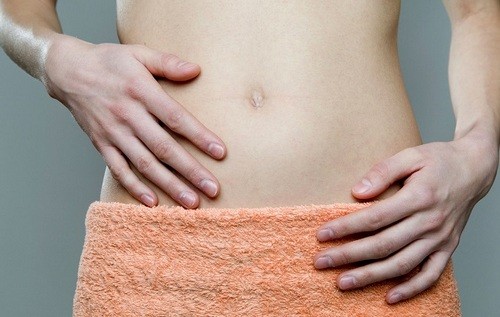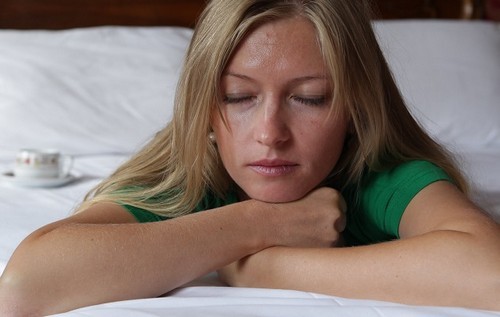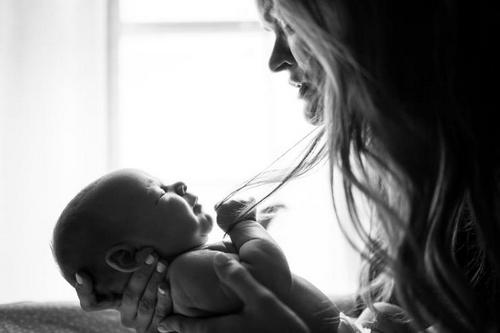The joy of having a baby always negates the painful suffering that a woman experiences during childbirth. And, it seems that all the terrible is behind us – we can only rejoice at a new, full of meaning, life.
But the joy that a woman experiences after the birth of her baby is overshadowed by postpartum pain in the perineum, back, tailbone and sacrum.
However, most often pain accompanies a woman in labor in the lower abdomen.
Causes
The main reason why a woman experiences abdominal pain after childbirth is the active production of the hormone oxytocin in the body, which triggers the process of intensive uterine contraction. During this period, the muscles of the uterus come in tone, it returns to its former size and shape. This process causes pain, which can be both cramping and pulling.
Another cause of abdominal pain is breastfeeding. The thing is that when breastfeeding, the nipple is irritated, as a result of which the hormone oxytocin is produced in even greater quantities. And the contraction of the uterus becomes even more intense.
If the lower abdomen hurts after childbirth, you should immediately inform your doctor about it, as this may indicate the presence of placenta residues in the uterus. What could be fraught with the health of women in labor? If the placenta has not been completely removed from the uterine cavity immediately after the birth of the baby, its residues adhere to the walls of the uterus, which leads to the formation of blood clots, and the process of decay starts. As a result, severe pains appear in the lower abdomen, which over time begin to intensify.
If you do not remove the placenta residues in time, there is a high risk of postpartum infection. To eliminate this problem, surgical treatment is used (curettage of blood clots and particles of the placenta from the uterine cavity) followed by antibacterial therapy.
After childbirth, endometritis (inflammation of the uterine mucosa) can occur, which is most often found in women who have not given birth naturally, that is, a cesarean section was used. During childbirth, infections and microbes can enter the uterus, which leads to inflammation of the uterine mucosa and the formation of pulling pain. Symptoms are as follows – abdominal pain, fever, spotting with purulent formations.
Salpingoophoritis or adnexitis is a postpartum inflammation of the appendages, characterized by mild pulling pain, which does not pass over time, but rather intensifies. Also, infection can cause a disease characterized by severe pain and fever – peritonitis. The presence of these symptoms requires an urgent appeal to a specialist.

If after childbirth a woman experiences pain in the lower abdomen, which gives to the spine, this indicates the presence of postpartum trauma (mixing of the vertebrae).
Also, the occurrence of pain in the lower abdomen after childbirth can be caused by diseases of the gastrointestinal tract. Having started breastfeeding, a woman is forced to completely review her diet, including a large amount of fiber and dairy products. What can serve as the beginning of the process of fermentation and gas formation in the intestine.
After childbirth, the process of urination is established, which can also cause abdominal pain. It is expressed by burning or aching pain, which eventually passes on its own.
During childbirth, there is a process of divergence of the hip joint, which can also cause pain, since in the postpartum period it is restored.
What is the norm, and when to see a doctor?
As a rule, pain after childbirth accompanies a woman for 5-7 days. If they are not strong, have a cramping or pulling character, then you should not worry about this. This is a natural process of restoring the body.
But if after the birth the lower abdomen hurts for a long time (more than a week) or the pains are acute and prolonged, at the same time the pain only increases every day, the temperature rises above 38 C, you should immediately consult a doctor.
Recommendations
To smooth out the discomfort, you need to follow simple recommendations:
- if there are sutures, they must be daily treated with brilliant green, this will speed up the healing process;
- the first days 3 to 4 should be urinated while standing, in this position the ureter is strengthened;
- to eliminate pain and lead muscles of the abdomen and uterus will help special physical exercises;
- after discharge from the hospital on the 4th – 5th day, a antenatal clinic should be visited;
- Follow all doctor’s recommendations.



